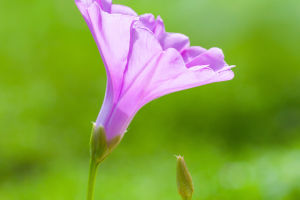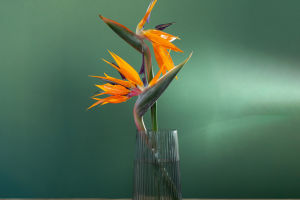Hey, Lykkers! Orchids are among the most intriguing and beautiful flowers in the world, known for their delicate blooms and a wide variety of shapes, sizes, and colors.
But beyond their aesthetic appeal, orchids carry rich symbolic meanings across different cultures.
Let's explore the fascinating cultural symbolism of orchids and discover how this captivating flower has come to represent beauty, luxury, love, and more throughout history.
Orchids in Ancient Greece: Symbol of Fertility
In ancient Greece, orchids were closely linked to fertility. The Greeks believed that the flower's appearance, particularly its roots, could determine the gender of unborn children. According to legend, if a father ate large orchid tubers, the child would be a boy, while consuming smaller tubers would result in a girl. Orchids became a symbol of not only fertility but also of strength and masculinity. It's incredible how one flower could carry such a significant role in ancient beliefs!
Orchids in Chinese Culture: Nobility and Purity
China, with its long-standing appreciation for orchids, has imbued this flower with deep symbolism. In Chinese culture, orchids represent integrity, elegance, and nobility, often associated with scholars and high moral standards. The famous philosopher Confucius compared the orchid to a virtuous person living in a chaotic world, remaining pure and noble despite external challenges. Orchids are also believed to bring good fortune and prosperity. Their enduring beauty in Chinese art and poetry shows the deep respect this culture has for the orchid.
Orchids in Victorian England: Luxury and Status
In Victorian England, orchids became symbols of luxury, status, and wealth. Due to their rarity and the difficulty of cultivation in Europe, only the upper class could afford them, leading orchids to be viewed as a sign of opulence. Victorians often gave orchids as gifts, particularly to express deep love and admiration. The number of orchids in a bouquet was thought to reflect the giver's feelings, making them an elite and meaningful token of affection. It's no wonder that orchids became a symbol of refined taste and extravagance.
Orchids in Japanese Culture: Strength and Courage
In Japan, orchids hold a slightly different symbolism compared to other Asian cultures. Samurai warriors and noblemen valued orchids as symbols of bravery, strength, and perseverance. They believed that the orchid's resilience in tough environments mirrored their own inner strength. Over time, orchids in Japan have come to represent both emotional fortitude and the enduring spirit of those who face adversity. This perspective shows how orchids can embody not just beauty but also inner strength and resilience.
Orchids in the Aztec Tradition: Power and Healing
The Aztecs of ancient Mexico saw orchids as a source of power and healing. They brewed a drink made from vanilla orchids (the plant from which vanilla is derived), believing it would provide strength and vitality. Orchids were highly valued in Aztec culture, not only for their medicinal properties but also for their association with love, beauty, and power. The fact that the Aztecs recognized orchids for both their practical and symbolic uses speaks to the profound influence these flowers had on their daily lives.
Orchids in Modern Symbolism: Love, Beauty, and Rarity
Today, orchids still carry many of the symbolic meanings from ancient cultures but have also adopted modern interpretations. Orchids are often seen as symbols of rare and delicate beauty, much like how Victorians viewed them. They are also used to represent love, particularly romantic or exotic love, due to their unique and mysterious appearance. In the world of floristry, orchids are commonly associated with refinement, sophistication, and even spiritual growth, making them one of the most versatile symbols across cultures.
Orchids are more than just exquisite flowers. Across different cultures and periods, they have represented everything from fertility and nobility to strength and luxury. The diverse symbolism attached to orchids speaks to their timeless appeal and their ability to convey deep, meaningful messages in every petal. Whether it's the Greeks connecting them to fertility or the Chinese celebrating their elegance, orchids hold a special place in the hearts of many around the world.
Stay curious, Lykkers, and next time you see an orchid, remember the rich tapestry of meanings behind this enchanting flower!


